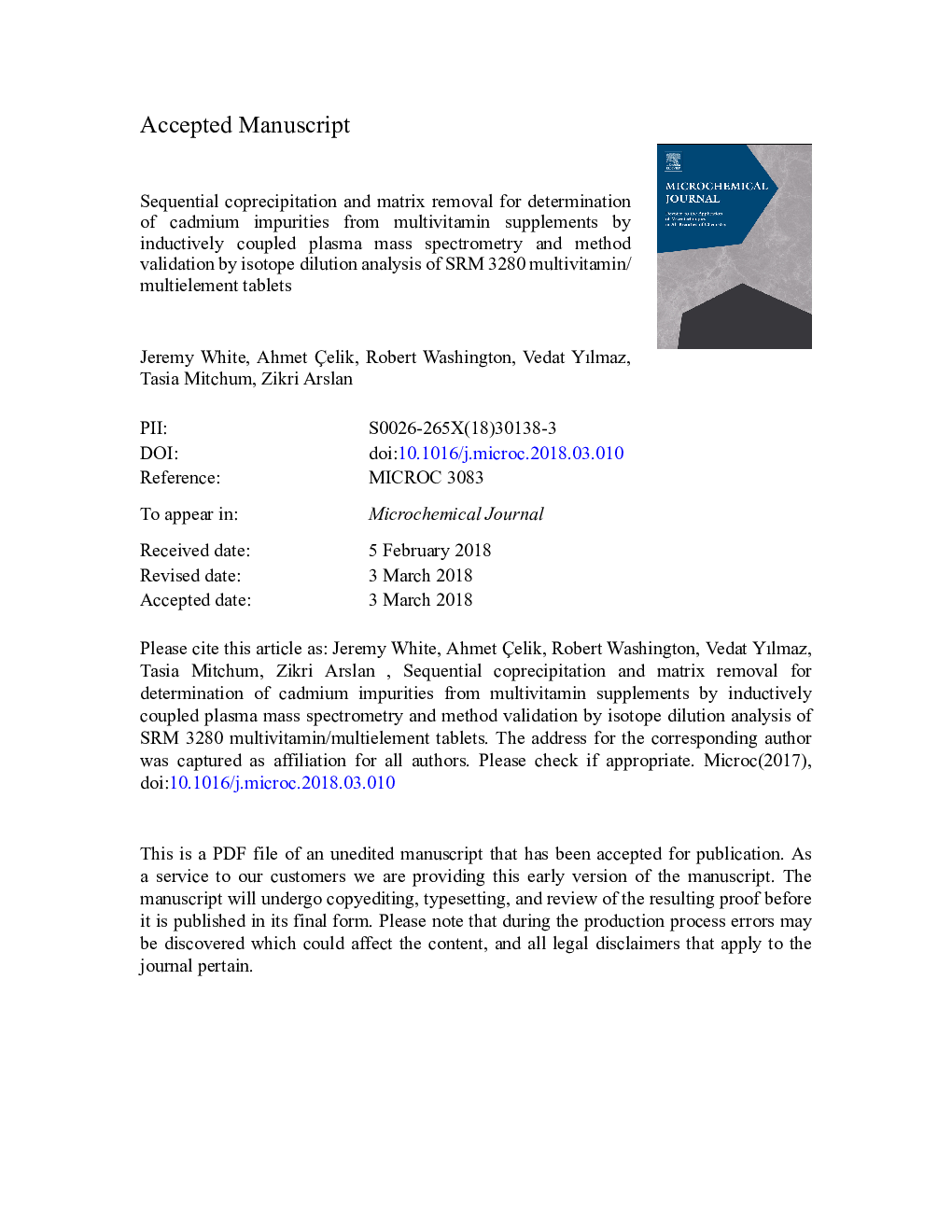| Article ID | Journal | Published Year | Pages | File Type |
|---|---|---|---|---|
| 7640783 | Microchemical Journal | 2018 | 28 Pages |
Abstract
In this paper, we examined three different sequential coprecipitation schemes based on Mg(OH)2 and CaF2 precipitation using triethylamine (TEA) and hydrofluoric acid (HF), respectively, for determination of cadmium (Cd) impurities from multivitamin/mineral (MVM) supplements by isotope dilution (ID) inductively coupled plasma mass spectrometry (ICP-MS). The schemes involved three-step coprecipitation with either TEA alone or in combination with HF and are designated as Scheme 1 (TEA-TEA-TEA), Scheme 2 (TEA-HF-TEA) and Scheme 3 (HF-TEA-TEA) according to the addition sequence of each reagent. Experiments were carried out with MVM solutions spiked with 60 μg Lâ1 Cd from a multielement standard solution. All schemes provided quantitative separation of Cd from MVM matrix. Scheme 1 was the least effective in removal of interfering concomitant elements, molybdenum (Mo) and tin (Sn). Scheme 2 performed better for Sn, but failed in eliminating Mo. Scheme 3 was the most effective in eliminating both Mo and Sn. Mo levels in test MVM solutions reduced from 4.3 μg mLâ1 to as low as 0.014 μg mLâ1 while that for Sn decreased from 0.5 μg mLâ1 to 0.018 μg mLâ1 allowing interference-free determination of Cd to be achieved. Salt-matrix due to Mg, Ca, P and K along with the essential elements (Mn, Fe, Cu and Zn) levels was also reduced significantly. Reagent blanks from HF and TEA were insignificant (0.008 μg Lâ1) allowing a limit of detection of 0.004 μg Lâ1 or 0.26 ng gâ1 Cd to be achieved (3Ï, n = 6). The performance of the coprecipitation method (Scheme 3) was validated by determination of Cd in multivitamin/multielement tablets certified reference material (SRM 3280) by ID-ICP-MS. Experimental results (ng gâ1) and recoveries were 78.8 ± 4.7 (98.5%), 77.9 ± 5.2 (97.4%) and 76.5 ± 4.8 (95.6%) for 110Cd, 111Cd and 114Cd isotopes, respectively. Several commercial MVM supplements were analyzed using the method. Mean Cd concentration ranged from 21.4 ng gâ1 to 93.3 ng gâ1. These values are much lower than those reported to date for various MVM supplements by ICP-MS determinations without chemical separation.
Related Topics
Physical Sciences and Engineering
Chemistry
Analytical Chemistry
Authors
Jeremy White, Ahmet Ãelik, Robert Washington, Vedat Yılmaz, Tasia Mitchum, Zikri Arslan,
